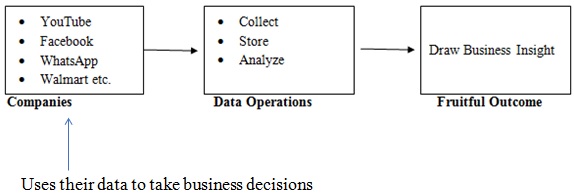Home »
Data Analytics
Data Analytics Overview
Learn, what is data analytics, why to use data analytics, how does data analytics work, what are the best data analytics tools, what are the advantages of data analytics?
Submitted by IncludeHelp, on October 17, 2021
What is Data Analytics?
Data Analytics is a method of collecting, organizing, and analyzing data sets to identify patterns, hidden relationships, and useful insights from data. Data analytics applies to raw data to convert it into useful information. Hence, Data Analytics examines data sets in order to identify trends and develop conclusions about the information contained within them. Data analytics is increasingly being carried out with the assistance of specialist tools and software.
Data Analyst
Data analyst works with data set usually require the knowledge that originates from analyzing the data. The data analytics process can be utilized to benefit a wide range of projects and using its components. Good data analytics explores the data from different angles to get the information that can be used in decision-making.
Examples of Data Analytics
Some of the popular examples of data analytics are listed here:
- Data analytics to get marketing insights
- Data analytics for risk management
- Data analytics to solve advertisers problem
- To examine patients medical records
Why Data Analytics?
Following figure shows that why data analytics is required -

Companies are collecting data from various sources. To collect the data, store it, and put analysis are some set of steps which are required to put on the data to get the fruitful insights and hidden information from the data so that it can be identified and recognized that what data is saying and what will be the future prediction so that organizations existence can be established as it is or can be enhanced in the market.
Organizations can utilize data analytics to gain control over their data and uncover new opportunities. As a result, smarter business decisions, more effective operations, higher profits, and happier customers are the result.
How does Data Analytics work?
Data analytics works by analyzing large data sets with a variety of tools and methods in order to uncover unique patterns, hidden correlations and relevant trends, and other insights that can be used to make data-driven decisions in the pursuit of improved results.
Data analytics follows a set of steps. These are as –
Data analytics refers to collect, process, cleaning, and analyzing the datasets. Data analytics provide its assistance to help the organizations to get the insights and the right decision can be carried out at the right time and right place.
- Collect Data - data collection refers to collect the data from the source which is needed to analyze. This can be accomplished through a variety of means, including computers, web sources, cameras, environmental sources, and human workers, among others.
- Process Data - Once data is collected and stored, it must be organized properly to get accurate results on analytical queries. Data processing processes the data using some set of tools as per the user requirements.
- Data Cleaning - Dirty data produces erroneous results and is therefore unusable for analysis until it has been thoroughly cleansed. Essentially, data cleaning is the act of preparing data for analysis through the removal or modification of data that is erroneous, incomplete, irrelevant or duplicated, or that has been incorrectly formatted. There are a variety of data cleansing methods available, depending on how the data is kept and the answers that are sought after.
- Data Analysis - Data analysis is a process to draw insights through numerous data sets.
Types of data analytics
There are two types of data analytics -
- Quantitative Analysis: Quantitative analysis refers the computation of numeric data. Generally, it includes data collection and data interpretations with numbers and graphs to identify patterns and trends. Quantitative analytics in business uses dataset creation for the business executives who can use it for the strategic decision making. Following are some examples of this:
- Web traffic data to figure out which parts of a website are the most popular.
- Google Analytics.
- Qualitative Analysis: Non-statistical or qualitative analysis provides general information through the use of text, sound, and other forms of media. Generally, Qualitative analytics is used by businesses to assess situations where hard numbers are unavailable. In assessing a situation, quantitative analytics is objective and deductive, whereas qualitative analytics is subjective and inductive.
What are the best data analytics tools?
The following are the Best Data Analytics Tools and Software, available in both open-source and paid versions:
- MS Excel
- SAS (Statistical Analysis Software)
- R
- QlikView
- KNIME
- RapidMiner
- Apache Spark
- Python, etc.
Some visualization techniques are also used for Data Analytics; these are –
- Power BI
- Tableau Software
What are the advantages of data analytics?
The key advantages are as follows -
- Improved Decision Making
- More Effective Marketing
- Better Customer Service
- More Efficient Operations
- Proactivity & Anticipating Needs:
- Mitigating Risk & Fraud
- Personalization & Service
- Enhance security
Advertisement
Advertisement